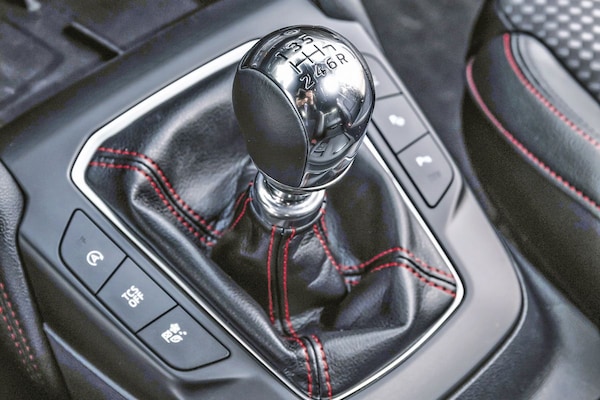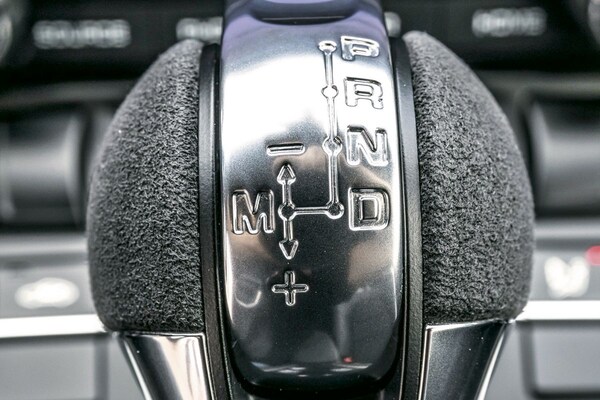
A manual or an automatic? This question has fascinated generations of car enthusiasts. However, the car industry is targeting the vending machine. Has the time-honoured manual gearbox had its day?
We have bad news for old-fashioned craftsmen: Mercedes-Benz and Volkswagen have announced that new models will come exclusively with dual-clutch transmissions. In the foreseeable future, the Tiguan will only be supplied with an automatic transmission, and that also applies to the new Passat. With other models, the manual transmission will remain on the menu until the end of this decade, but after that it’s ready. In doing so, the manufacturers mentioned are responding to a trend that has been going on for a long time. While cars with an automatic transmission, continuously variable transmission (CVT) and semi-automatic transmission in the Netherlands accounted for 19 percent of total sales ten years ago, this percentage had already risen to 58 percent by 2020, according to figures from Bovag. and Rai Association. The automatic transmission is also becoming increasingly popular in our country.
This means that the end of the maintenance-friendly and affordable manual gearbox seems to be approaching bit by bit. We give a brief overview of the available transmissions.
1. Manual gearbox

The manual transmission is the oldest way of transferring power from the engine to the wheels through a transmission. The gear system contains a mechanism that is connected to the gear lever via rods or a cable. With the lever you operate so-called shift sleeves that establish the connection between the input and output shaft. Before you can shift gears, the clutch must cut off the power supply. In the past manual transmissions had three or four gears, today they have five or six. There are even cars with a seven-speed manual transmission.
+ High efficiency
+ Compact dimensions
– Uncomfortable operation
– Interruption of the pulling force
2. Dual clutch transmission

Volkswagen introduced the dual clutch transmission in series production in 2003 under the name DSG (‘Direktschaltgetriebe’). Two automated bins are provided with a coupling. The odd gears are located in one sub-box, the even gears in the other. Depending on the rotational speed and speed, the electronics control the actuators in the transmission housing and not only shift gears more comfortably than a manual gearbox, but also faster and more efficiently. This means that Volkswagen models with a DSG transmission are always more economical than models with a manual gearbox. That is also the reason that Volkswagen has decided to only offer the Tiguan and Passat with DSG transmission from 2023.
+ Quick switching actions
+ High efficiency
– Technical complex
– Driving away from a standstill is often not so smooth
3. Sequential Gearbox

Sequential gearboxes can be found in both small cars and sports cars. For example, BMW M models (sometimes at extra cost) were supplied with an automated manual gearbox, called SMG. And the Smart ForTwo got an automated six-speed gearbox as standard. The operating principle of a sequential gearbox corresponds to that of a manual gearbox equipped with automatic control. Instead of the driver, hydraulic cylinders and electric servo motors, together with a control unit, ensure the change of gear.
+ Affordable+ No higher consumption– Interruption of pulling power
– Slow shifting behaviour
4. CVT

The ‘continuously variable transmission’ is a stepless transmission. DAF took the first Variomatic into production in 1958. The main part is the variator. It consists of movable sets with conical discs, over which a belt or chain runs. One cone disc set is coupled to the drivetrain, the other to the engine. By shifting one cone disc on the shaft while the other cone disc is held in place, a stepless transmission ratio is created depending on the speed. Audi supplies a CVT under the name Multitronic for models with longitudinally mounted engines and front-wheel drive.
+ No shifting breaks
+ Lots of comfort
– Lots of engine noise
– Distant driving feeling
5. Torque converter automatic transmission

Oldsmobile introduced the classic four-speed torque converter automatic transmission in the US in 1939. This happened under the name Hydramatic. Inside the transmission housing are several planetary gears; the number of systems determines the number of gears. Multi-disc clutches ensure the power transmission of the planetary gear systems between the input and output shafts. Until the 1980s, these transmissions were hydraulically controlled. In today’s cars, the clutch is electrically operated by hydraulic valves, the actuation is done electronically.
+ Lots of comfort
+ Nice when towing trailers
– Transmission takes up a lot of space
– Substantial surcharge
Which version is faster?
The Audi R8 with 525 hp is available with three different transmissions: a six-speed manual, the six-speed R-tronic automated transmission and the seven-speed S-tronic with dual clutch. The R8 with S-tronic appears to perform clearly better in the comparison and it consumes less fuel as a pleasant side effect.
Also in the Porsche 718 Boxster and 718 Cayman, there is much in favor of the seven-speed dual clutch transmission (PDK). The six-cylinder boxer with 400 hp sprints significantly faster with the PDK gearbox than with the manual six-speed gearbox. On the other hand, the latter variant has a 6 km/h higher top speed. During our test round, consumption was identical. The previous Volkswagen Golf R with 300 hp four-cylinder turbo engine and permanent four-wheel drive (4Motion) was delivered with dual clutch transmission (DSG) and with traditional manual transmission. Both had six gears. Volkswagen introduced the DSG box in the volume segment. The consumption, acceleration and switching comfort also spoke in favor of the DSG box.
How do you prevent wear and tear?
If you do not handle a gearbox properly, this will irrevocably lead to damage or above-average wear. Defects can also have a technical cause. Oil stains under the car can be a sign of damage to the gearbox. If the lubricant does not come out of the engine, but drips from the transmission, the car should be taken to the garage as soon as possible. Warning signals are unusual, in particular whining noises from the gearbox, restless driving or vibration when starting from a standstill. Even if the poker jumps out of gear or if the gears are difficult to put in, that is a sign on the wall. If you want to avoid expensive repairs or even replacement of the transmission (which costs thousands of euros), follow these advices:• Never engage a gear forcefully and always fully depress the clutch pedal. Do not let the clutch slip.•
Avoid high revs.
• Do not skip gears unnecessarily.
• Do not pair and switch at the same time.
• Do not switch to reverse gear abruptly.
• Do not rest your hand on the shift knob when you are not shifting.
• Have the transmission oil replaced in time, adhere to the maintenance interval.
Conclusion
In addition to the design and the engine, the transmission also excites the minds of car enthusiasts. Whether the gearbox is operated manually or shifts automatically has long been a cause of controversy. However, that is going to change. New combustion engine models, such as the next Volkswagen Tiguan, are only offered with a dual clutch transmission. This reduces technical diversity and removes a decisive difference with electric cars, which usually do not have a gear lever.
– Thanks for information from Autoweek.nl